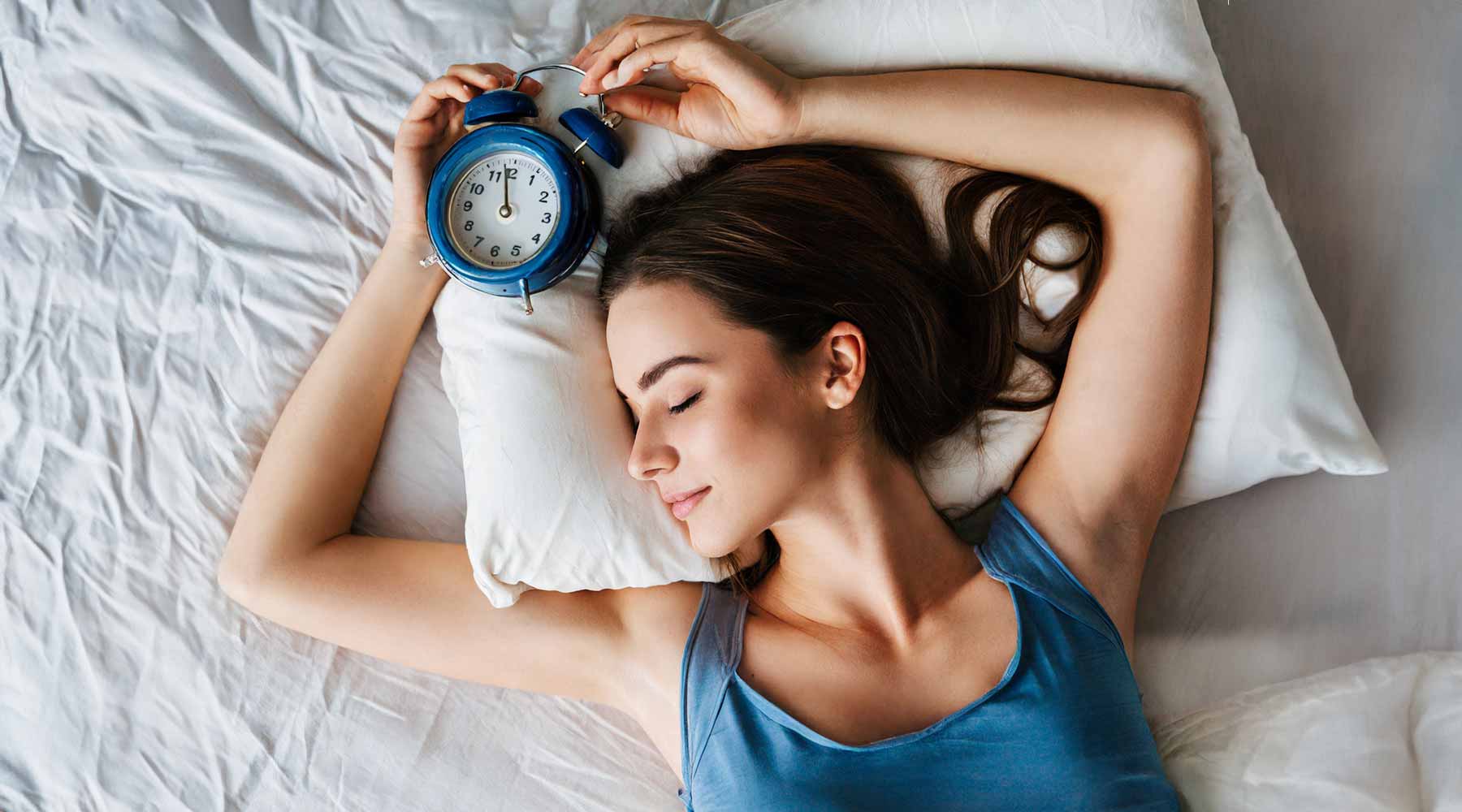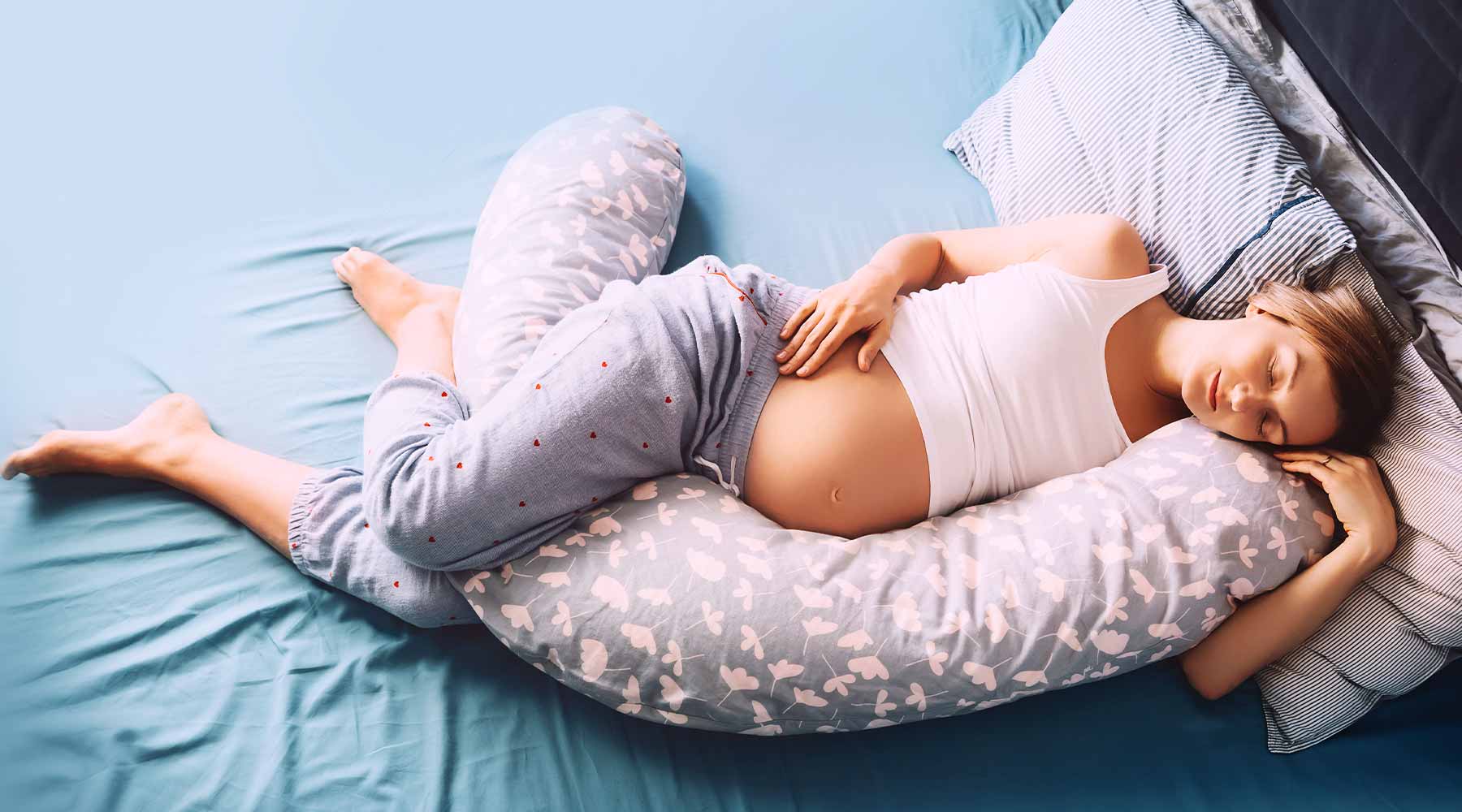
Chronobiology: Understanding the internal clock
Each of us has an internal clock that controls our biorhythm and sleep-wake behavior. You can find out here how the internal clock works and why it is so important for our health.
Table of Contents
- What is the internal clock?
- Internal clock timer
- What influence does the internal clock have?
- What influence does the internal clock have on sleep?
- Changes in the internal clock over the course of life
- What happens when the internal clock is disturbed?
- Conclusion
1. What is the internal clock?
The internal clock refers to the biological system that controls the temporal processes in our body and adapts it to a certain rhythm. It consists of a master clock, which synchronizes our 24-hour rhythm, and many peripheral clocks located in the organs and tissues.
The master clock is located directly in our brain, more precisely in the suprachiasmatic nucleus (SCN), a part of the hypothalamus. It determines our sleep-wake rhythm, controls the peripheral clocks and determines the so-called circadian rhythm, to which almost all body processes adapt. This rhythm is determined in our cells from birth by so-called clock genes and ensures that the body's functions are synchronized with the day-night rhythm.
The circadian rhythm is not exactly aligned with the 24-hour day, but actually lasts a little longer, namely approx. 24 hours and 11 minutes. In order to approximate the natural 24-hour day-night rhythm, the internal clock system must be continually regulated. This happens with the help of internal clocks and their so-called timers. The most important and strongest timer is light.
2. Internal clock timer
Light
Light is the most important and strongest timer of the internal clocks. It is sensed by special cells in our optic nerve, which send a signal to the suprachiasmatic nucleus in the brain. Numerous physiological processes are controlled from there, for example the release of certain messenger substances and hormones as well as numerous metabolic activities.
Feeding times
Metabolism and nutrition are also closely related to the internal clock. The time at which we eat and the composition of the food can have a direct influence on our internal clock. Proper meal timing can therefore also reduce the effects of jet lag when traveling across time zones.
Psychological factors (stress, worries)
Psychological stress, frequent ruminations or persistent worries can also affect the internal rhythm, e.g. b delay falling asleep.
Physical activity
Physical activity can also influence our internal clock through its direct influence on our metabolism and numerous physiological systems. Exercise with plenty of daylight can acutely promote alertness, whereas higher-intensity physical activity in the afternoon can increase sleep pressure and thus make it easier to fall asleep in the evening. Accordingly, physical activity at the right time can also help to improve internal rhythm and sleep.
3. What influence does the internal clock have?
The internal clock determines numerous bodily functions. It controls body temperature, blood pressure, the release of hormones and messenger substances as well as metabolism and the sleep-wake rhythm. This can be seen, for example, in natural fluctuations during the day and night.
This allows the body to process food better at certain times or compensate for fluctuations in blood sugar more easily. Before newborns become accustomed to the influence of light, food intake is the main timer and is closely linked to sleep.
In addition, the activity of the individual organs is also related to the circadian rhythm. In traditional Chinese medicine, each organ has specific working and resting times. The energy flows through the body in 12 meridians (pathways), each of which is connected to a body organ. If a particularly large amount of energy flows through, the organ is particularly active.

4. What influence does the internal clock have on sleep?
The internal clock regulates the sleep-wake rhythm and is largely based on light and darkness. This means it influences when we fall asleep in the evening and when we can get up in the morning. As long as it is light, the production of the “sleep hormone” melatonin in the brain and cells is inhibited. As the exposure to light decreases (i.e. as darkness increases), melatonin production is activated again, which prepares the body for sleep and fatigue occurs. Melatonin itself does not make you tired, but only prepares the body for sleep by regulating body temperature and activating cell metabolism.
This process can vary slightly from person to person, depending on their sensitivity to light. That is why a total of three chronotypes are distinguished in chronobiology: the early, the late and the neutral types.
🌅 Early type (lark)

Early types are usually awake early, have hardly any problems with tiredness in the morning and can start the day quickly. You will be physically and mentally productive in the morning. Due to the early start to the day, tiredness sets in comparatively early in the evening.
🌇 Late type (owl)

Late types are still productive in the evening and are only really tired late at night. They usually reach their peak performance in the late evening hours and need longer in the early morning to wake up and get up to speed. Because our social structures prefer an early start to the day, the evening type in particular often has to forego important hours of sleep because the rhythm they live in does not match their natural rhythm.
⚪ Neutral types (Dove)

Most people are neutral types, which means they are neither awake extremely early nor very late.
5. Changes in the internal clock over the course of life
A person's basic temporal alignment and chronotype are determined in their clock genes from birth. In adulthood, light is the strongest and most effective pacemaker. However, this ability must first develop in the first few months of life. Until about the 6th. Month of life, babies show polyphasic sleep behavior - that is, they sleep in many shorter sleep phases that are spread throughout the day and night. Afterwards, the so-called ganglion cells in the eye mature and the children slowly adapt to the light-related day-night cycle.
During puberty it can happen that the chronotype temporarily shifts slightly towards the late type. However, this is completely normal and we usually revert to our original type by the time we reach adulthood.
6. What happens when the internal clock is disrupted?
Disruptions to circadian rhythms are becoming more and more common in today's society. Due to shift work, traveling across time zones (jet lag) or social obligations, we often live against our natural rhythm, for example because we stay up too late in the evening, have to get up too early in the morning or work at times when the internal clock is off actually likes rest and sleep. This messes up the entire biological system, which can lead to sleep disorders. Many other health problems can arise, not least due to disturbed sleep. It is therefore important to adapt to your own rhythm as best as possible and to prepare adequately for changes, such as a time change or long-distance travel.
You can find out the quickest way to get over jet lag in this article.
7. Conclusion
-
Chronobiology is about the body's temporal biorhythms
-
The internal clock consists of a master clock in the brain and many small clocks in the body's cells and organs
-
There are three chronotypes: early types, late types and neutral types
-
Shift work, travel jet lag and social jet lag disrupt the internal clock and harm sleep and health
Greetings and see you soon!




Leave a comment
This site is protected by hCaptcha and the hCaptcha Privacy Policy and Terms of Service apply.